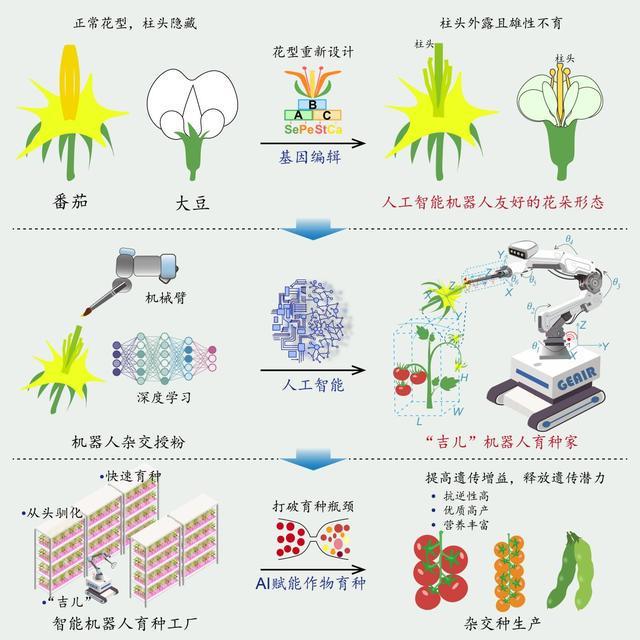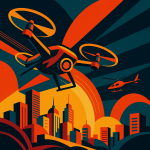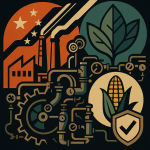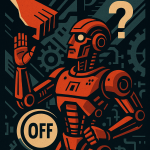Key Points
- GEAIR (Genetically Engineered AI Robot) is the world’s first intelligent robotic plant breeder, announced August 11, 2025, capable of autonomous hybrid pollination.
- Developed by the Chinese Academy of Sciences (Zhongguo Kexueyuan Yichuan Yu Fayu Shengwu Xue Yanjiu Suo 中国科学院遗传与发育生物学研究所), GEAIR uses a “crop-robot collaborative design” where gene-edited plants (“robot-friendly” structural male sterile lines) are designed for precision pollination by the AI robot.
- This system significantly cuts breeding costs, shortens breeding cycles, and boosts efficiency, forming an “intelligent robotic breeding factory” that integrates technologies like de novo domestication and speed breeding.
- The technology has been successfully applied to soybeans, allowing for the first-time creation of structural male sterile soybean lines, potentially giving China an advantage in hybrid soybean breeding.
- This research establishes a new AgTech paradigm: BT Foundation + AI Empowerment + Robot Labor, with GEAIR 2.0 aiming to integrate BT and AI across the entire agricultural supply chain.

A new robotic plant breeder named GEAIR is making serious waves, and it’s a massive deal for the future of food and agriculture.
Announced on August 11, 2025, this isn’t just another farm robot.
GEAIR is the world’s first intelligent breeding robot that can handle autonomous hybrid pollination.
Think of it as the ultimate mashup of high-tech biology and artificial intelligence, poised to change how we create better crops.

Resume Captain
Your AI Career Toolkit:
- AI Resume Optimization
- Custom Cover Letters
- LinkedIn Profile Boost
- Interview Question Prep
- Salary Negotiation Agent

So, What Exactly is GEAIR and Why is it a Game-Changer?
Developed by a team at the Chinese Academy of Sciences (Zhongguo Kexueyuan Yichuan Yu Fayu Shengwu Xue Yanjiusuo 中国科学院遗传与发育生物学研究所), led by Researcher Xu Cao (Xu Cao 许操), GEAIR stands for Genetically Engineered AI Robot.
The core idea is brilliantly simple yet incredibly complex to execute.
Instead of just building a robot to work with existing plants, the team redesigned the plants to work perfectly with the robot.
They call this the “crop-robot collaborative design” concept.
Here’s the breakdown of how they pulled it off:
- Biotechnology (BT) First: Using gene editing, they changed the structure of crop flowers. This created what are called “robot-friendly” structural male sterile lines. In simple terms, they engineered plants that are physically easier for a robot to pollinate.
- AI Empowerment: They then developed the GEAIR robot using deep learning and AI. The robot is specifically trained to identify and work with these newly designed plants, making the pollination process incredibly efficient and precise.
The result?
A system that smashes through old bottlenecks in hybrid breeding.
It dramatically cuts breeding costs, shortens breeding cycles, and seriously ramps up efficiency.
This groundbreaking research was so significant it was published in the top-tier scientific journal, Cell.

Welcome to the “Intelligent Robotic Breeding Factory”
This isn’t just about a single cool robot.
The researchers have taken it a step further by integrating GEAIR into a full-scale “intelligent robotic breeding factory.”
This factory combines the robot with other next-gen breeding technologies like:
- De novo domestication (essentially creating new crops from wild plants).
- Speed breeding accelerators (techniques to grow crops much faster).
This setup allows for the rapid, intelligent, and customized creation of superior crop varieties on demand.
It’s the start of a whole new era in agriculture.

Find Top Talent on China's Leading Networks
- Post Across China's Job Sites from $299 / role, or
- Hire Our Recruiting Pros from $799 / role
- Qualified Candidate Bundles
- Lower Hiring Costs by 80%+
- Expert Team Since 2014
Your First Job Post

A Major Breakthrough for Soybean Production
- GEAIR Integration: Central to the operation, providing robotic pollination.
- De novo domestication: Ability to create new crops from wild varieties.
- Speed breeding accelerators: Techniques to significantly shorten crop growth cycles.
- Rapid Customization: Allows for quick and tailored development of superior crop varieties.
- Intelligent Processing: Utilizes AI for decision-making and optimization.
To prove the system works, the team applied it to one of the world’s most important crops: soybeans.
For the first time ever, they successfully created structural male sterile soybean lines using this method.
This is a massive deal.
It gives China a potential asymmetrical advantage in breaking through the challenges of soybean hybrid breeding.
The end goal is a substantial increase in per-unit yield, a critical factor for global food security.

ExpatInvest China
Grow Your RMB in China:
- Invest Your RMB Locally
- Buy & Sell Online in CN¥
- No Lock-In Periods
- English Service & Data
- Start with Only ¥1,000

The New AgTech Formula: BT + AI + Robot Labor
- First-time success: Created structural male sterile soybean lines.
- Asymmetrical advantage: Positions China ahead in hybrid soybean breeding.
- Increased yield: Aims for substantial rise in per-unit yield.
- Food security: Critical advancement for global food supply.
This research has established a powerful new paradigm for the future of AgTech:
BT Foundation + AI Empowerment + Robot Labor
China is now at the forefront of this movement, having created a closed-loop intelligent robotic breeding system with its own independent intellectual property rights.
Reviewers for Cell magazine called the research an “exciting and innovative breakthrough.”
They praised it as a perfect example of how combining different fields—like biology and AI—can solve major scientific and industrial problems.

What’s Next for GEAIR and Intelligent Breeding?
The team isn’t stopping here.
They’ve already filed national and international PCT patents for both the plant creation technology and the robot itself.
The next project is “GEAIR 2.0.”
This upgraded system aims to integrate BT and AI across the entire agricultural supply chain:
- Breeding
- Production
- Harvesting
- Traceability
They also plan to expand the use of structural male sterile lines to a wide variety of other crops.
Keep an eye on this space—the GEAIR robotic plant breeder is just the beginning of a fundamental shift in how we grow our food.





